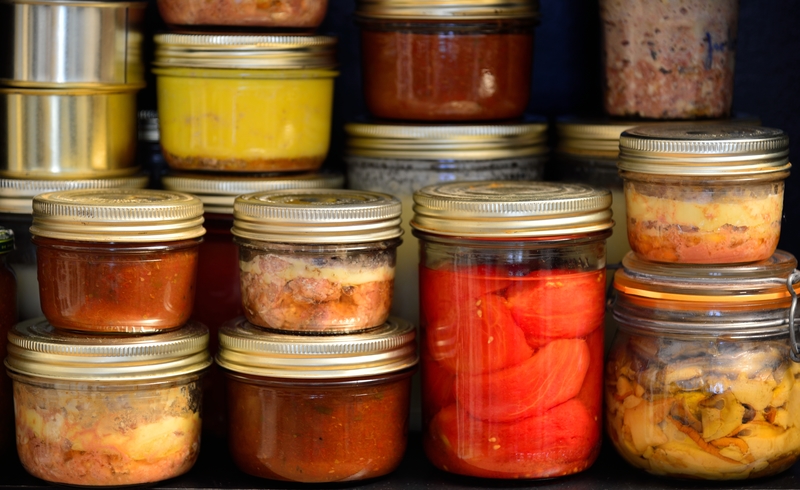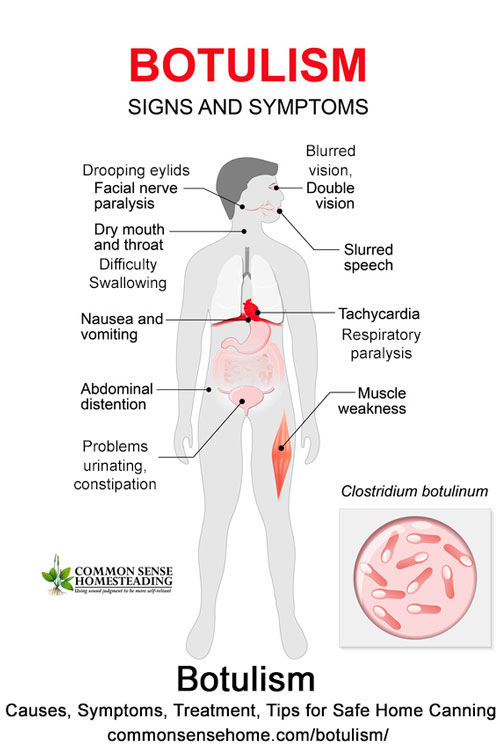Whether you've been canning food for decades or are a newbie to the process, it's important to keep an eye out for any conditions that could cause botulism to appear. By being cognizant of those conditions, you can be confident that your canned food will be ready to safely eat whenever you need it.
What is botulism?
The term “Botulism” is commonly used to describe poisoning with Clostridium botulinum toxin. To thrive, the bacteria need:
- Temperatures between 40-120°F/ 5-49°C
- Anaerobic conditions (Oxygen below 2%)
- Neutral pH
- Moist conditions (Water activity level greater than 0.85)
A sealed jar of moist, low acid food provides excellent conditions for the growth of botulism bacteria. If food is not processed correctly, it's possible for the toxins to build to dangerous levels within 3-4 days.
How dangerous is botulism?
If botulism symptoms are caught early, there is a botulism antitoxin that can prevent paralysis and death.
How do I know if canned goods have botulism toxin in them?
You can't see or taste botulism spores or toxins until the toxins build up to excessive levels. Lisa Rayner quotes a pressure canner booklet in her Natural Canning Resource Book, stating, “A rank cheesy odor is typical of botulism in its well-developed stage.”
Botulism Symptoms
If you think someone has botulism symptoms, call 911. As mentioned above, it can kill. Initial symptoms include nausea and vomiting. Neurological symptoms begin within 12-72 hours of eating contaminated food. Symptoms of botulism include:
- Blurred vision/double vision
- Drooping Eyelids; other signs of facial nerve paralysis
- Slurred speech
- Nausea and vomiting
- Difficulty swallowing, dry mouth and throat
- Tachycardia
- Respiratory paralysis
- Constipation, problems urinating
- Muscle weakness
You can't spread botulism person-to-person. The toxins must be ingested.
When Pressure Canned Food Goes Bad
Mike O'Connell pressure canned elk, but he cut the processing time. It nearly killed him.
“Borrowed a pressure cooker, used an old family recipe for canning,” O’Connell said.
I had way too much meat to deal with,” said O’Connell.
The pressure cooker was too small. O’Connell had already browned the meat in a cast iron pan. So he decided to shortcut the process. Once the jars sealed airtight he would take them out of the pressure cooker and start a new batch. The next day, he heard a pop in the pantry.
O’Connell found the jar with the popped seal, put it in the fridge and ate it the next day. The following week he heard another lid pop. Just as he had before, O’Connell found the jar and stuck it in the fridge. And a few days later he ate it for supper.
“This time, it didn’t work out,” O’Connell said.
O’Connell had an upset stomach in the night, but he didn’t connect it to having eaten the meat.
A Potent Toxin
Botulism is a paralyzing illness caused by what Centers for Disease Control calls the most potent toxin known to science. It’s rare; there were only 20 foodborne cases nationwide in 2011.
Improperly home canned foods are the leading culprit.
The doctors didn’t even wait to confirm botulism. They ordered a dose of anti-toxin from the CDC.
Remember he stopped cooking the jars of elk meat when he heard the seals lock in place. Washington State University food safety expert Zena Edwards says that was O’Connell’s nearly fatal mistake.
And that’s the strange thing about the bacteria that causes botulism. It thrives when deprived of oxygen. By shortcutting the cooking time, O’Connell failed to kill the bacteria. Instead, he sealed it into the perfect environment for it to produce the poisonous toxin.
How to Prevent Botulism in Home Canned Foods
Keep spores from germinating by:
- Having a pH ≤ 4.6 (High acid foods)
- Adding sugar or salt to tie up free water (High sugar jams, pickled foods with salt and vinegar)
- Kill botulism spores using a pressure canner and tested canning recipes. Spores are destroyed by heating food to 240-250°F/116-121°C under pressure of 10-15 pounds per square inch (psi) at sea level.
- Processing times should be adjusted for elevation. For extra safety, boil low acid foods for 10 minutes before serving. (See The Natural Canning Resource Book for more information.)
Botulism Treatment
If someone still manages to get sick, get them to the hospital immediately. They must get the botulism antitoxin.
Have you or anyone you've known ever had to deal with botulism due to canned food?
Article Source: Common Sense Home


Best Regards! Have a prosperous day!